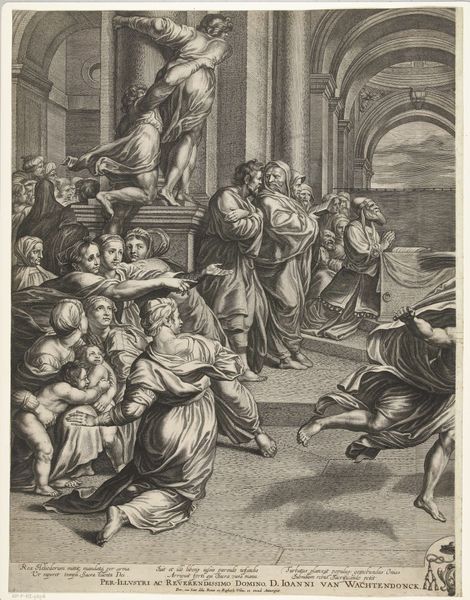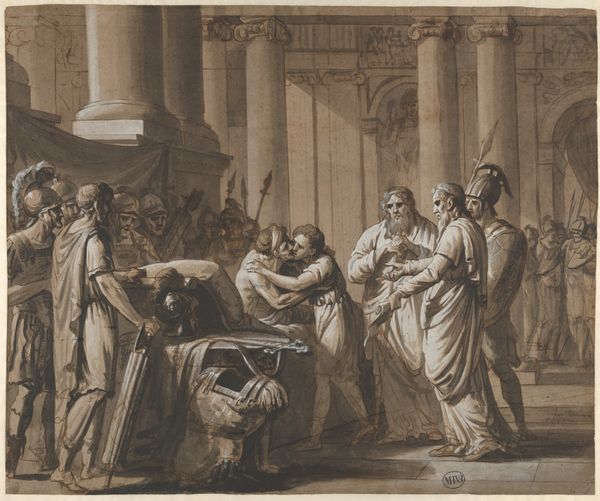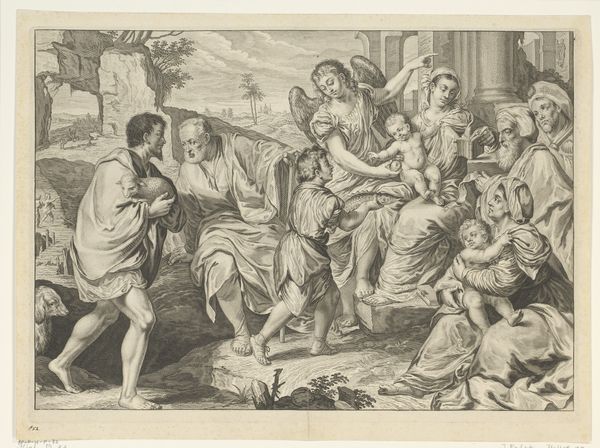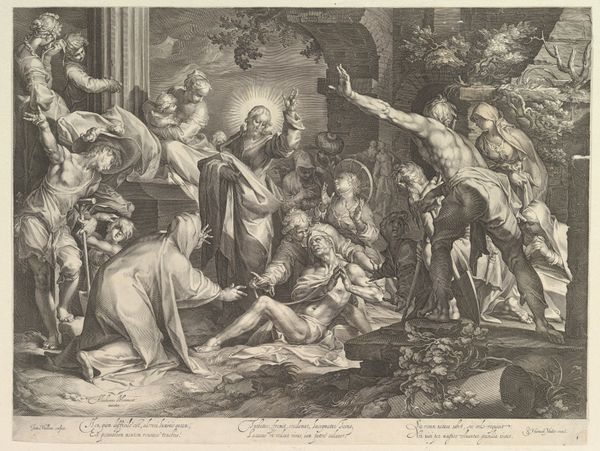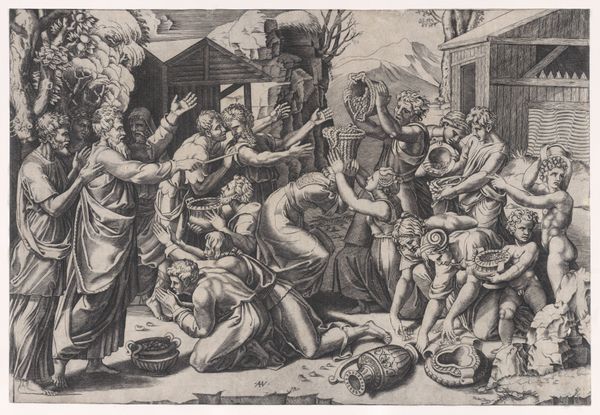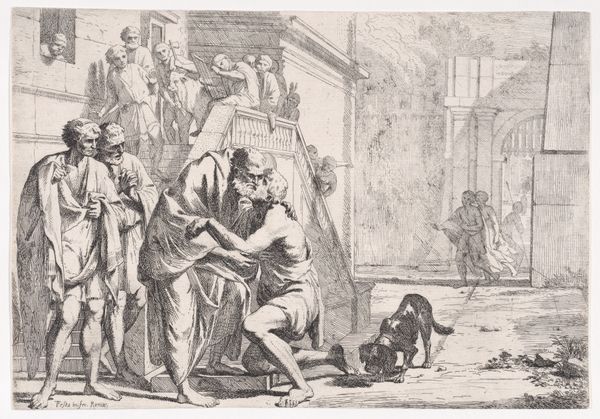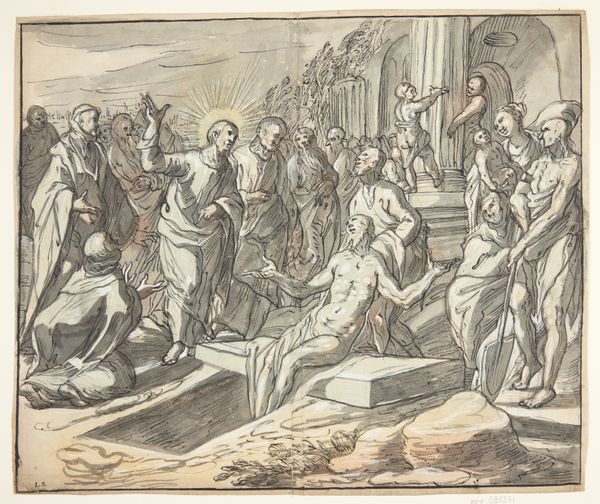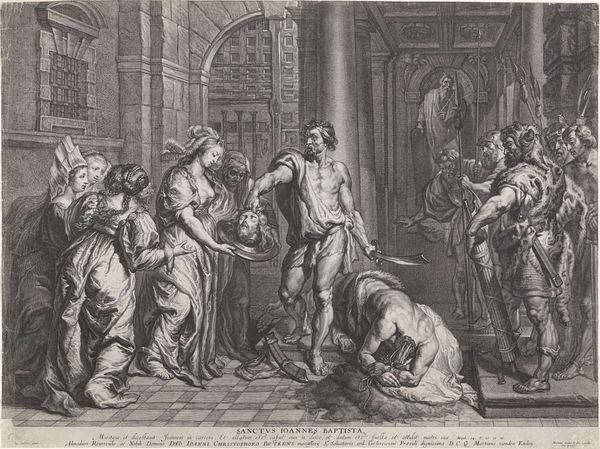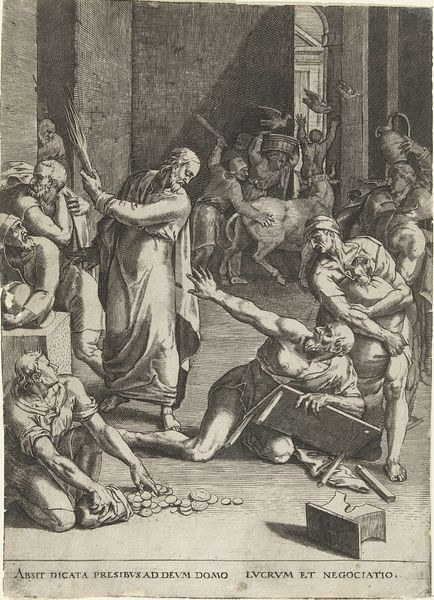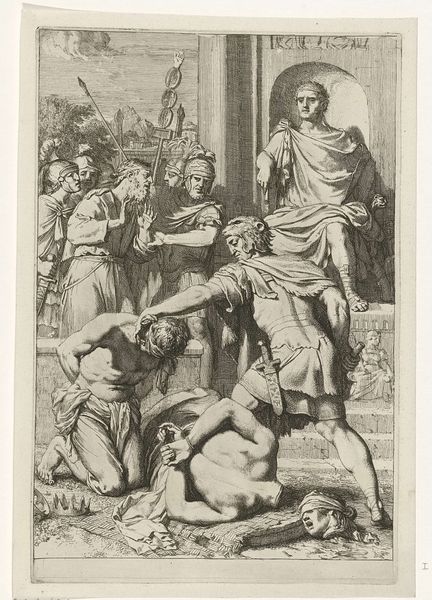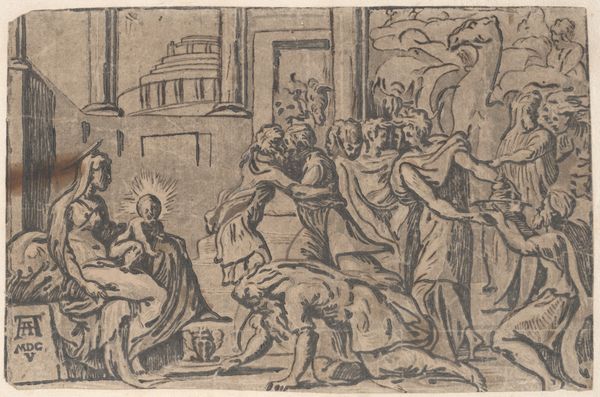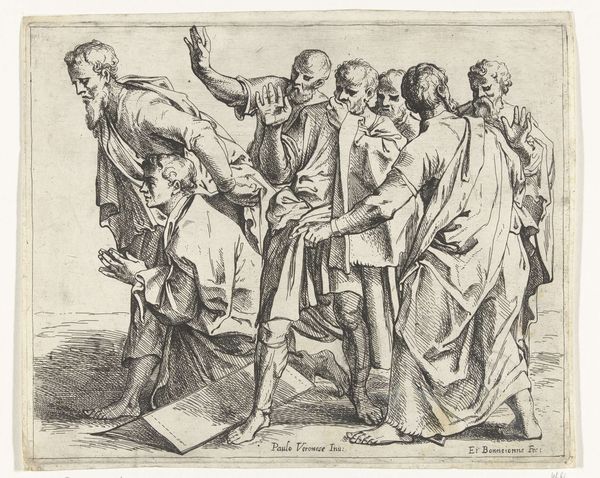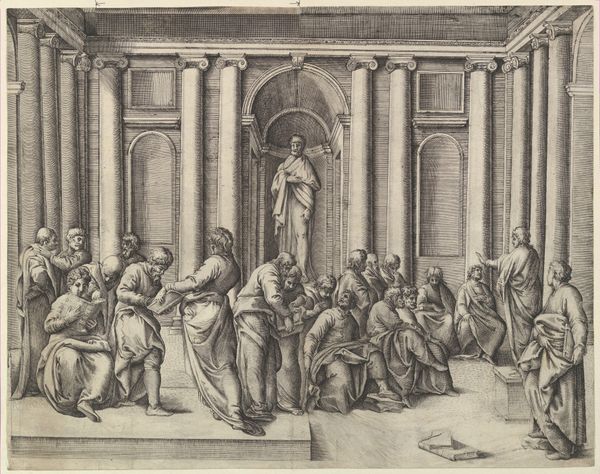
Christ Driving the Money-Changers from the Temple n.d.
0:00
0:00
drawing, print, paper, ink, chalk
#
pencil drawn
#
drawing
#
narrative-art
#
baroque
# print
#
pencil sketch
#
charcoal drawing
#
figuration
#
paper
#
ink
#
pencil drawing
#
pen-ink sketch
#
chalk
#
history-painting
#
academic-art
Dimensions: 140 × 207 mm
Copyright: Public Domain
Art Historian: Formalist Editor: Editor: So, this is "Christ Driving the Money-Changers from the Temple," possibly by Ottmar Elliger the Younger. It seems to be an ink and chalk drawing on paper. The scene is incredibly dynamic, a real sense of swirling chaos, which comes from all the diagonals and overlapping figures. What strikes me is how the artist creates movement without the use of strong color. How do you interpret this work from a visual standpoint? Art Historian: Indeed. Notice the careful orchestration of the composition. The artist skillfully uses line and value to guide the viewer’s eye through the crowded scene. Consider how the architectural setting, though static, contributes to the overall dynamism by framing and containing the energetic figures. Editor: Yes, the architecture is a good point. It creates a stage for all the action. But how do you mean exactly it *contains* the figures? Art Historian: The columns and arches provide a structural framework, a sense of order against which the disarray unfolds. Look closely at the figures themselves. Elliger utilizes a range of techniques – from quick, gestural lines for background figures to more deliberate rendering for those in the foreground. This creates a depth of field, does it not? Editor: It does, absolutely. There is some wonderful hatching and cross-hatching. The layering does push some figures forward. Now that you mention the architectural framework and the range of linework I am beginning to see its organization! Art Historian: Precisely. Elliger controls chaos with thoughtful formal choices. This is about more than just rendering a biblical scene. It is the interplay of form and line, light and shadow. The contrast amplifies its dynamic feeling of motion. The overall composition—how different masses interplay—are all considered choices. It gives great strength to the work. Editor: I see your point. I was too focused on the subject. Now I realize the artist has organized the figures to build a much stronger, frenetic rhythm through contrast and well-placed focal points. Thanks! Art Historian: And I am reminded how easy it is to initially bring preconceived notions when looking at narrative art. The conversation helps clarify how one element impacts all others.
Comments
No comments
Be the first to comment and join the conversation on the ultimate creative platform.
